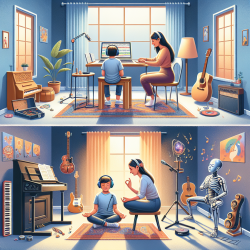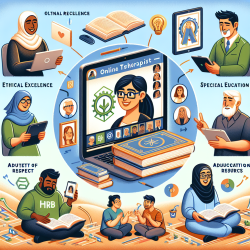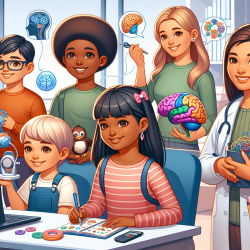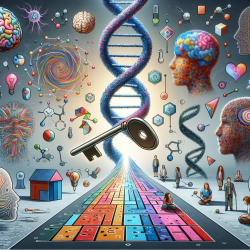Introduction
In a world where visual cues dominate, individuals with vision impairments often face unique challenges that affect their psychological, physiological, and social well-being. A recent scoping review published in BMJ Open titled "Effectiveness of music-based interventions to address well-being in people with a vision impairment: a scoping review" explores the potential of music-based interventions to improve the well-being of people with vision impairments. This blog delves into the findings of this review and discusses how practitioners can harness the power of music to create positive outcomes for children and adults alike.
The Power of Music
Music has long been recognized for its ability to evoke emotions and create connections. It can serve as a bridge to enhance communication, foster social interaction, and improve mood. The scoping review identified various music-based interventions, including active music therapy strategies and passive music listening, that have shown promise in improving the psychosocial well-being of individuals with vision impairments.
Key Findings
The review analyzed 13 studies, 11 of which focused on children and teenagers, highlighting the potential of music therapy in young populations. The interventions varied from active music-making to passive listening, with the majority emphasizing social outcomes. While the studies reported improvements in psychosocial well-being, the review noted a lack of robust outcome measures and statistical analysis, underscoring the need for further research.
Implementing Music-Based Interventions
For practitioners looking to integrate music-based interventions into their therapeutic repertoire, the following strategies can be considered:
- Active Participation: Encourage children to engage in music-making activities, such as playing instruments or singing, to promote social interaction and communication skills.
- Personalized Music Selection: Tailor music choices to the individual's preferences to enhance engagement and emotional connection.
- Therapeutic Environment: Create a supportive and accessible environment for music therapy sessions, considering the unique needs of individuals with vision impairments.
- Collaboration with Music Therapists: Work with trained music therapists to design and implement effective interventions that align with therapeutic goals.
Encouraging Further Research
The review highlights the need for more high-quality, evidence-based studies to establish the efficacy of music-based interventions for individuals with vision impairments. Practitioners are encouraged to contribute to this growing field by conducting research and sharing their findings. By doing so, they can help build a robust body of evidence that supports the integration of music therapy into comprehensive care plans.
Conclusion
Music-based interventions hold significant promise for enhancing the well-being of individuals with vision impairments. By leveraging the power of music, practitioners can create meaningful connections and improve outcomes for their clients. As we continue to explore the potential of music therapy, let us be guided by data-driven decisions and a commitment to creating positive change.
To read the original research paper, please follow this link: Effectiveness of music-based interventions to address well-being in people with a vision impairment: a scoping review.










